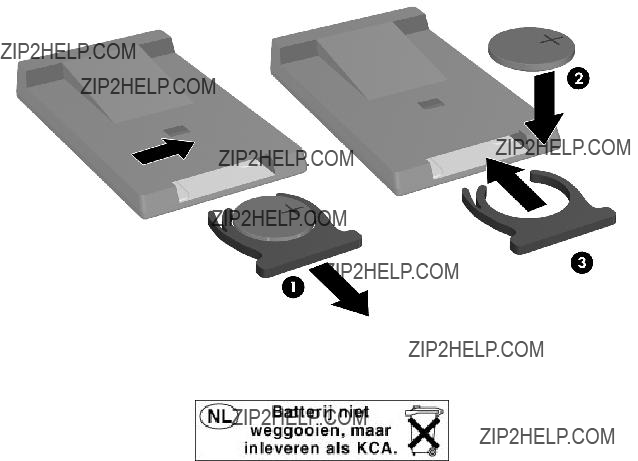
HP mp2220 Series
Digital Projector
User???s Guide

HP mp2220 Series
Digital Projector
User???s Guide
?? Copyright 2005
The information contained herein is subject to change without notice.
The only warranties for HP products and services are set forth in the express warranty statements accompanying such products and services. Nothing herein should be construed as constituting an additional warranty. HP shall not be liable for technical or editorial errors or omissions contained herein.
Digital Projection and Imaging
1000 NE Circle Blvd.
Corvallis, OR 97330
First Edition, May 2005

Contents
3
Using the
Troubleshooting suggestions . . . . . . . . . . . . . . . . . . . . . . . . . . . . . . . . . . . . . . . . . . . . . . . 49 Warning light problems . . . . . . . . . . . . . . . . . . . . . . . . . . . . . . . . . . . . . . . . . . . . . . . . 49
4

1 Setting Up
Safety precautions
WARNING! Read and observe these precautions and all others in this manual to reduce the risk of injury and equipment damage.
???Do not look directly into the lens when the lamp is on.
???Do not expose the projector to rain or moisture, and do not use it near water.
???Keep paper, plastic, and combustible material at least 0.5 m (2 ft) away from the projector lens and exhaust vents.
???Do not allow liquid, food, or small objects to get inside the projector. If material gets inside the projector, contact HP for assistance.
???Do not put anything on top of the projector. Do not place any liquids where they might spill on the projector.
???Do not block any vents on the projector. Do not place the projector near any source of heat, such as a radiator or amplifier.
???Use only an approved power cord rated for the voltage and current marked on the product label. Do not overload any outlet or extension cord. Do not circumvent the grounding prong on the power cord.
???Route all cables so they are not located where people can step on them or trip on them.
???Place the projector flat on its base on a sturdy surface. Do not stand the projector on its front surface.
???Do not touch the lens with your fingers. Use a soft, dry cloth to clean the projector case. See ???Cleaning the projector and lens??? on page 41.
???Do not open the projector except as instructed by this manual, and only after allowing the projector to cool down.
???If the projector is damaged in any way, contact HP for assistance.

What???s in the box?
Before setting up your projector, be sure your shipping box includes the following items. If the shipping box does not contain any of the following items, contact HP.
TIP: After you open the box and remove the contents, save the box in case you must ship the projector.
Identifying the contents of the box
6 Setting Up

Identifying the contents of the box (continued)
information.

Identifying common features
Projector at a glance
Identifying major components
8 Setting Up

Projector buttons and lights
Identifying the projector buttons and lights

Back panel
Identifying12back panel components
10 Setting Up

Remote control
TIP: Before using the remote control, remove the battery protector by pulling the plastic tab until it comes out of the remote control.
Identifying components of the remote control
Identifying common features 11

Identifying components of the remote control (continued)
Accessories
Get more from your presentations with HP projector accessories. You can purchase accessories at http://www.hp.com or through your projector dealer.
???HP projection
???HP premium remote
???HP power
???HP
???HP replacement
12 Setting Up

Setting up the projector
Positioning the projector
The following tables show you where to position the projector in relation to the screen.
 TIP: For best picture quality, place the projector 1.5 to 5 m (5 to 16 ft) from the screen
TIP: For best picture quality, place the projector 1.5 to 5 m (5 to 16 ft) from the screen
Setting up the projector 13

Image size relative to distance from the screen
If you do not want to use the distance table, you can use the following equations to help determine where to install the projector relative to the screen.
Calculating projection distances
distance from lens to screen = A ?? width of screen minimum and maximum distance from screen = B
width of screen = 0.8 ?? diagonal of screen (for 3:4 screen)
projector lens below bottom of screen = C ?? width of screen (for 4:3 screen)
A = 2.0 to 2.3
B = 1.5 to 10 m (5 to 33 ft)
C = 0.11 to 0.50
14 Setting Up

Connecting power
1.Place the projector on a stable platform located 1.5 to 10 m (5 to 33 ft) in front of the screen. Ideally, the platform should be lower than the bottom of the screen.
2.Connect one end of the power cord to the back of the projector 1 and the other end to a grounded electrical outlet 2.
If you want to permanently install the projector on a table or behind the screen, see ???Installing the projector??? on page 47.
Setting up the projector 15

Connecting a computer
Requires:
???VGA cable 1
???USB cable 2 (optional, provides mouse and page up/down control)
???Audio cable,
The optional USB connection allows you to use the mouse and page up/down features on the remote control.
See ???Showing a computer screen??? on page 29.
TIP: If the computer display does not appear on the projector, you might have to press a combination of keys on the computer to turn on the computer???s VGA output. For example, on some computers you must press FN+F4 or FN+F5. For instructions, refer to the user documentation provided with your computer.
16 Setting Up

Connecting a handheld organizer
Not all handhelds come with
Requires:
???VGA cable 1
???
Setting up the projector 17

Connecting a video source
Many video devices have more than one type of output
Highest quality
Standard quality
Most video and audio cables shown in the following sections are available from HP.
If you want to connect a SCART video device to the projector, you will need a SCART adapter (available from HP).
18 Setting Up

Connecting a
Examples: Cable boxes, DVD players, satellite receivers, and
Requires:
???
???Audio cable,
TIP: Many DVD players and other
If possible, configure the video source to use progressive scan output, such as 480p, 575p, or 720p. For additional information, refer to the user documentation provided with the video source.
Setting up the projector 19

Connecting an
Examples: DVD players, VCRs, cable boxes, camcorders, and video gaming devices
Requires:
???
???Audio cable,
20 Setting Up

Connecting a
Examples: VCRs, DVD players,
Requires:
???
???Audio cable,
Setting up the projector 21

Turning the projector on and off
Removing the lens cover
??? Pull the lens cover off the lens.
22 Setting Up

Turning the projector on
1.Be sure the power cord is connected and the lens cover is removed.
2.Press the power button on the projector or on the remote control.
The projector takes a minute or so to warm up. The power button blinks during
 TIP: If the picture does not appear on the screen, try the following:
TIP: If the picture does not appear on the screen, try the following:
???If you are using a computer, press the key combination that turns on its video output. For example, press FN+F4 or FN+F5 on some computers.
???On the projector, press the source button one or more times to select the correct input port.
NOTE: It is normal for parts of the projector and the air coming out of the projector to be very warm. If the projector starts to overheat, the temperature warning light will turn on and the projector will shut down.
Turning the projector on and off 23

Turning the projector off
1.Press the power button on the projector or remote control to turn off the projector. Do not hold the button down.
The power button blinks during the
2.If you want, disconnect video and audio equipment from the projector during the cool- down period or after the power button stops blinking.
CAUTION: Do not disconnect power until the projector has cooled down (the fan stops) and the power button stops blinking. Otherwise, you might shorten the life of the lamp.
3.If you must unplug or remove the projector, wait until the power light stops blinking, then unplug the power cord.
If you try to turn on the projector again during the
Moving the projector
When moving the projector:
???Allow the projector to cool down before moving it. Then disconnect all cables.
???Avoid bumps and jolts. Use a carrying case or padded container when possible.
???Observe temperature and humidity limits (see ???Specifications??? on page 55). If the projector is cold, allow it to warm gradually to avoid condensation.
24 Setting Up

Making basic adjustments
This section provides instructions for making basic adjustments to the projector.
Aiming the projector
???To raise or lower the projected picture on the screen, push in the height adjustment button 1 and raise or lower the front of the projector 2. Release the button to lock the adjustment.
???To level the picture on the screen, turn the adjustable foot 3 to lengthen or shorten the foot.
When you tilt the projector up or down, the sides of the picture might become slanted. However, the projector automatically adjusts the picture to make the sides vertical. To
Making basic adjustments 25

Adjusting the focus and zoom
1.Rotate the zoom ring to adjust the picture size from 100 to 115%.
2.Rotate the focus ring until the image becomes clear. The projector can be focused at distances of 1.5 to 10 m (5 to 33 ft).
If the picture does not fit the screen, you might have to move the projector closer to or farther away from the screen.
26 Setting Up

Using the remote control
Using the remote control 27

TIP: From within the distance of 9 m (30 ft), aim the remote control at the screen or at the front or back of the projector.
28 Setting Up

2 Showing Presentations
Showing a computer screen
1.Be sure the computer is connected to the projector and turned on. See ???Connecting a computer??? on page 16.
2.Be sure the projector is set up, turned on, and adjusted. See ???Making basic adjustments??? on page 25.
3.If a different input source is shown on the projector, press the source button on the projector or remote control one or more times to select the VGA port.
4.If the computer display is not shown on the projector, you might have to turn on the computer???s video output port. For example, some computers require you to press a key combination, such as FN+F4 or FN+F5. Refer to the user documentation provided with your computer.
If you want to adjust the picture, see ???Adjusting the picture and sound??? on page 31.
Selecting a different source
If the picture from your video source does not appear on the screen, you can quickly select the correct source.
SPress the source button one or more
You should also be sure the video source is turned on and playing video.
Hiding or showing the picture
1.Press the hide button on the projector or remote control to blank the picture. This does not affect the video source, which continues playing.
2.Press any button to show the picture again.
TIP: If you press the hide button a second time within 5 seconds, the display becomes completely blank, without the reminder how to show the display again.
Showing a computer screen 29
30 Showing Presentations

3 Adjusting the Projector
Adjusting the picture and sound
Choosing the best picture mode
You can quickly choose a different picture mode to make adjustments to the picture. Picture modes can control properties such as color and size. They let you easily choose the best settings for ambient lighting and the type of video content (see ???Adjusting the picture and sound??? on page 31).
SPress the picture mode  button one or more times to select the picture mode that gives the best picture.
button one or more times to select the picture mode that gives the best picture.
You can also customize the picture modes so they are best for your video sources:
1.Press the picture mode  button to select the picture mode you want to adjust.
button to select the picture mode you want to adjust.
2.Press enter and go to Picture > Customize picture mode.
3.Adjust the settings until you are satisfied with the picture.
 TIP: To exit from any
TIP: To exit from any  button.
button.
Adjusting the picture and sound 31

Adjusting the shape of the picture
Depending on the type of video source you are viewing, the picture might or might not always look correct or fit on the screen:
???If the active video device sends widescreen output to the projector, press enter, go to Input, and set Widescreen input to Yes. See 1 in the following diagram.
???If the video device sends standard output, set Widescreen input to No.
TIP: If you show widescreen pictures on a wide projection screen, a standard picture might not fit on the screen. One solution is to change the current picture mode so it makes a smaller picture. Press enter, go to Picture > Customize picture mode, and set Aspect Ratio to Reduced. See 2 in the following diagram.
32 Adjusting the Projector

Adjusting a slanted picture
If the projector is tilted up or down, the sides of the picture on the screen might slant in or out, even though the top and bottom are level. The automatic keystone adjustment corrects this
1.Press enter, go to Quick choice > Keystone, and press enter.
2.Press left  or right
or right  until the sides of the picture are not slanted. Press up
until the sides of the picture are not slanted. Press up  or down
or down  to turn the automatic adjustment on or off.
to turn the automatic adjustment on or off.
TIP: If the top and bottom of the picture slant in different directions, move the projector until it is straight in front of the screen, not off to one side.
TIP: If you adjust the keystone correction, the automatic correction is suspended until you manually enable it again or turn off the projector.
Adjusting the picture and sound 33
Adjusting the picture for best color
You can fine tune the picture settings on your projector to get the best color and image quality according to your preferences. You should perform these steps for each input source device and each input port that you use. Do them in the order shown. For some input ports, some of these settings may not be available.
1.Press the picture mode  button and select the picture mode you want to use for the current source.
button and select the picture mode you want to use for the current source.
2.Press enter and go to the Picture menu.
3.Go to Color settings > Brightness. Adjust to the highest setting that still gives the darkest black for black areas. You can view black objects or shadowed areas while making the adjustment.
4.Go to Color settings > Contrast. Adjust to the highest setting that does not wash out fine detail in bright areas. You can view bright clouds or textured white areas while making the adjustment.
5.Go to Customize picture mode > Picture enhancement. Adjust to the setting that gives the best overall
6.Go to Customize picture mode > Color temperature. Adjust to the setting where whites and colors look best.
7.Go to Color settings > Color saturation. Adjust to the setting where colors look most natural.
8.Go to Color settings > Tint. Adjust to the setting where colors look most natural.
9.Go to Customize picture mode > White intensity. Adjust this setting above 0 as needed to brighten the picture but not affect colors.
10.Repeat all steps if necessary.
Adjusting other picture settings
The
1.Press enter, and go to Picture.
2.Change the picture adjustments as needed.
From the Picture menu, you can change many picture options, such as brightness, contrast, and picture shape, as well as customize the picture modes.
To get descriptions for all available picture adjustments, see ???Picture menu??? on page 38.
34 Adjusting the Projector
Adjusting the volume
You can control the volume of the projector???s speaker:
???To change the volume of the projector???s speaker, press enter, go to Quick choice > Volume, and change the setting.
???To turn the sound on or off temporarily, press enter, go to Quick choice > Mute, and mute the sound.
Adjusting the projector setup
1.Press enter, and go to Setup.
2.Set the setup adjustments as needed.
From the Setup menu, you can select settings, such as menu language, power usage, and menu timeout.
To get descriptions for all available setup adjustments, see ???Setup menu??? on page 39.
Adjusting the picture and sound 35

Using the
Changing settings using the
You can change the
1.Press enter on the projector or remote control. This displays the
2.Press up  or down
or down  to highlight the desired menu icon, then press right
to highlight the desired menu icon, then press right  to move into that menu.
to move into that menu.
3.Press up  or down
or down  to highlight a setting, then press enter to begin adjusting the setting.
to highlight a setting, then press enter to begin adjusting the setting.
4.Press left  or right
or right  , or press up
, or press up  or down
or down  , to adjust the setting, as prompted.
, to adjust the setting, as prompted.
5.Press enter to return to the menu.
6.To go to a different menu, press left  and select a menu.
and select a menu.
7.To close the  button.
button.
If you do nothing for a period of time, the
 TIP: To exit from any
TIP: To exit from any  button.
button.
36 Adjusting the Projector

Quick choice menu
Quick choice menu
Input menu
For a visual aid, see ???Back panel??? on page 10.
Input menu
Using the
Picture menu
Some picture adjustments are available only when certain input ports are in use. Unavailable adjustments are shown in gray in the
Picture menu
38 Adjusting the Projector

Picture menu (continued)
Reset this picture mode Restores the current picture mode to its default settings.
Using the
40 Adjusting the Projector

4 Maintaining the Projector
Performing routine maintenance
Getting the projector status
To get the projector status:
S Press the enter button on the projector or remote control and go to Help.
This screen shows information and status for the projector.
Cleaning the projector and lens
You can clean the projector housing using a soft, dry cloth.
You can clean the front lens of the projector using the following recommendations. You cannot clean any of the internal surfaces.
???To minimize the risk of damaging or scratching the lens surface, blow dust particles off the lens with clean, dry, deionized air.
???If this method does not work, use the following method:
a.Wipe the lens in a single direction with a clean, dry cloth. Do not wipe back and forth across the lens.
b.If the cloth is dirty or smears the lens, wash the cloth. If the cloth is still dirty after washing it or the fabric is damaged, replace it.
CAUTION: Cleaning requires special consideration:
???Do not spray any type of fluid or cleaner directly on the lens surface. Cleaners might damage the lens.
???Do not use fabric softener when washing a cleaning cloth or softener sheets when drying the cloth. Chemicals on the cloth might damage the surface of the lens.
???Do not store a cleaning cloth in contact with the lens for a long time because doing so contaminates the lens with dye from the cloth. The cloth can be contaminated if left in the open air.
Performing routine maintenance 41

Replacing the lamp module
As the projector operates over time, the brightness of the projector lamp gradually decreases and the lamp becomes more susceptible to breakage. You can install a new lamp at any time to bring the projector up to
WARNING! Replacing the lamp module requires special consideration:
???To reduce the risk of injury, be careful when removing the lamp module as broken glass might be present. If the lamp is broken, contact HP about repairs that might be required due to glass fragments.
???This digital projector lamp contains a small amount of mercury. If the lamp breaks, adequately ventilate the area where the breakage occurred, discard any nearby food and drink, and thoroughly clean the table surface around the projector. Wash your hands after cleaning the area or handling a broken lamp. Disposal of this lamp may be regulated due to environmental considerations. For disposal or recycling information, please contact your local authorities or the Electronic Industries Alliance (www.eiae.org). You can find safety information about the lamp at: www.hp.com/hpinfo/globalcitizenship/environment/productdata
???Because the lamp assembly operates at a very high temperature, wait 30 minutes before removing the lamp module.
1.Turn off the projector and allow it to cool for 30 minutes.
2.Unplug the power cord.
3.Turn the projector over onto a soft surface.
4.Loosen the two screws 1 holding the lamp cover and remove the cover.
42 Maintaining the Projector

5.Loosen the two screws 2 on the lamp module, and pull out the module 3.
6.Insert the new lamp module into the projector and tighten the two screws.
7.Install the cover and tighten the two screws.
8.Turn on the projector. If the lamp does not turn on after the
9.Press enter, go to Setup > Reset lamp hours, and press enter.
Performing routine maintenance 43

Replacing the battery in the remote control
1.Use a ballpoint pen to hold the battery latch toward the center, then pull out the battery holder 1.
2.Insert the new battery 2 in the holder.
3.Push the holder 3 into the remote control.
When discarding old batteries, contact your local
44 Maintaining the Projector

Upgrading the projector
Updating the firmware
HP might periodically release updated versions of the projector firmware to enhance the projector performance. The projector firmware version is shown in the
USB method
1.On a computer with a USB port, go to www.hp.com/support, select your region, select the software download option, and type your projector model number in the product box.
2.Download the latest file intended for a USB upgrade.
3.Connect a USB cable (available from HP) between the USB port on the projector and the USB port on the computer.
4.On the computer, run the file you downloaded by
Upgrading the projector 45
46 Maintaining the Projector

5 Installing Permanently
Installing the projector
Choosing cables
If you are permanently installing the projector or using it with long cables, consider the following suggestions when planning the installation:
???Use
???Minimize cable length as much as possible. For video cables longer than 6 m (20 ft), use
???Do not run audio or video cables next to power or network cables. If they must cross, cross them at 90 degrees.
???If you are installing cables in walls, use cables with necessary approvals, such as Underwriters Laboratories (UL) approval.
???If you are running cables above a dropped ceiling, you must use
???Before installing cables permanently, check the setup with the final cables in the open.
Installing on a table
This installation is covered in detail in Chapter 1. See ???Setting up the projector??? on page 13 for more information.

Installing for rear projection
1.Place the projector 1.5 to 10 m (5 to 33 ft) behind a translucent screen that is designed for rear projection.
See ???Setting up the projector??? on page 13 for more instructions.
2.Press enter, go to Setup > Picture orientation. Then select Rear Normal.
Locking the projector
The projector includes a built in slot to secure the projector with a cable and lock (such as the Kensington MicroSaver lock system, available at many computer stores).
1.Wrap the cable around a secure object, such as a table leg. Loop the cable to create a slip knot around the stationary object, and be sure it cannot slip off.
2.Insert the lock 1 into the hole and twist the key 2.
48 Installing Permanently

6 Fixing Problems
Troubleshooting suggestions
If you have a problem with your projector, check the following statement that most closely matches the nature of the problem, then look in that section of this chapter:
??????Warning light problems??? on page 49
???
??????Picture problems??? on page 50
??????Sound problems??? on page 53
??????Interruption problems??? on page 53
??????Remote control problems??? on page 53
TIP: If these suggestions do not solve your problem, go to http://www.hp.com/support for additional information. To contact HP, refer to the support guide included with the projector.
Warning light problems
If both red warning lights are blinking:
???Allow the projector to cool down after it turns off. If this condition occurs after you restart the projector, an internal component has failed. Contact HP for assistance.
If the red temperature light is on or blinking:
???Allow the projector to cool down after it turns off. Be sure that nothing is near or blocking the vents on the projector, and that the vents are free of lint and other objects. Remove any sources of excess heat in the room. Observe temperature and altitude limits (see ???Specifications??? on page 55). If the warning light turns on or blinks after you restart the projector, contact HP for assistance.
If the red lamp light is on or blinking:
???Allow the projector to cool down after it turns off. If the warning light turns on or blinks after you restart the projector, remove and reinstall the lamp module.
???Install a new lamp. If this occurs after you install a new lamp module, remove and reinstall the lamp module. If a new lamp does not fix the problem, contact HP for assistance.
If the red lamp light is flickering quickly:
??? Check that the cover over the lamp is correctly installed and fully attached.
If no lights or sounds turn on:
???Be sure that the power cable is securely connected to the projector and the other end is plugged into an outlet with power.
???Press the power button again.
???Unplug the power cord for 15 seconds, then plug it in and press the power button again.
Picture problems
If a ???scanning??? or ???waiting??? message is displayed on a blank screen:
???Press the source button on the projector or remote control one or more times until the correct source name is selected.
???Be sure the external source is turned on and connected.
???For a computer connection, ensure your notebook computer???s external video port is turned on. Refer to the computer manual. On some notebooks, for example, press the FN+F4 or FN+F5 function keys to turn on the external video port.
If the wrong input source is displayed:
???Press the source button on the projector or the remote control one or more times to select another active input source.
If the image is out of focus:
???Be sure the lens cover is removed.
???While displaying the
???Ensure the projection screen is 1.5 to 10 m (5 to 33 ft) from the projector.
???Check the projection lens to see if it needs cleaning.
???For a computer connection, set the display resolution as the computer to the same resolution as the projector, 1024 ?? 768 (see ???Specifications??? on page 55). If the computer has multiple monitors, adjust the resolution of the monitor assigned to the projector.
???For a computer connected to the
50 Fixing Problems
If an
???The projector has been set to the wrong position setting. Press enter, go to Setup > Picture orientation, and select the correct setting.
If the image is too small or too large:
???Adjust the zoom ring on top of the projector.
???Move the projector closer to or farther from the screen.
???On the projector or remote control, press the picture mode  button one or more times to see if one of the picture modes makes the image the correct size.
button one or more times to see if one of the picture modes makes the image the correct size.
???Press enter, go to Picture > Customize picture mode > Aspect ratio. Try the different settings.
???If the source device sends
If the image has slanted sides:
???As much as possible, reposition the projector so that it is centered on the screen and below the bottom of the screen.
???The projector can automatically correct slanted sides of the picture when the projector is tilted up or down. However, additional corrections might be required in certain situations. Press enter and go to Quick choice > Keystone. Adjust the setting as needed, or enable or disable the automatic keystone correction.
If the image is stretched:
???On the projector or remote control, press the picture mode  button one or more times to see if one of the picture modes makes the image the correct size.
button one or more times to see if one of the picture modes makes the image the correct size.
???Press enter, go to Picture > Customize picture mode > Aspect ratio. Try the different settings.
???If the source device sends
If the projected colors seem slightly wrong:
???See ???Adjusting the picture for best color??? on page 34.
???Press enter, go to Help > Diagnostics, and run the color test.
If the projected colors seem completely wrong:
???Be sure the pins on the cable connectors are not bent or broken.
???Press enter, go to Picture > Color settings > Color space. Try the different settings.
???Press enter, go to Help > Diagnostics, and run the color test.
???Press enter, go to Picture > Color settings > Reset color settings, and press enter.
???Press enter, go to Setup > Reset all settings, and press enter.
If the picture is not clear (ghost images, smearing, poor quality):
???Be sure the video cable you are using is coaxial cable rated at 75 ohms. Any other cable or impedance rating can reduce picture quality.
???The video cable connecting the video source to the projector probably must be higher quality. See ???Choosing cables??? on page 47.
If several picture settings seem completely wrong and you cannot fix them:
???Press enter, go to Picture > Color settings > Reset color settings, and press enter.
???Press enter, go to Setup > Reset all settings, and press enter.
If a scrolling or
???Press the auto sync button on the projector or remote control.
???Turn everything off. Then power on the projector first and power on the notebook or desktop computer second.
???If the previous steps do not correct the display image, adjust the resolution of the notebook or desktop computer to the same resolution as the projector, 1024 ?? 768 (see ???Specifications??? on page 55). If the computer has multiple monitors, adjust the resolution of the monitor assigned to the projector.
If the image is flickering or unstable for a computer connection:
???Press the auto sync button on the projector or remote control.
???Press enter, go to Picture > VGA settings, and adjust Frequency or Tracking.
If the image disappears from the computer screen:
???For a notebook computer, you might be able to turn on both the external VGA port and the
If text or lines from a computer display seem rough or uneven:
???Check the focus adjustment.
???Press enter, go to Quick choice > Keystone, and adjust the setting to 0.
52 Fixing Problems
Sound problems
If no sound is coming out of the projector:
???Be sure you have an audio cable securely connected between the projector and the source device.
???Press enter, go to Quick choice, and check that Mute is turned off and Volume is correct.
???Press enter, go to Help > Diagnostics, and run the sound test.
???Be sure that the mute and volume settings are correct on the source device, such as a VCR, camcorder, or computer.
Interruption problems
If the projector stops responding to all controls:
???If possible, turn off the projector, then unplug the power cord and wait at least 15 seconds before reconnecting power.
If the lamp shuts off during a show:
???A minor power surge might cause the lamp to shut off. This is normal. Wait a few minutes, then power on the projector.
???If a red warning light is on or blinking, see ???Warning light problems??? on page 49.
If the lamp burns out or makes a popping sound:
???If the lamp burns out and makes a popping sound, the projector will not turn back on until the lamp module has been replaced.
???If the lamp breaks, contact HP about repairs that might be required due to glass fragments.
Remote control problems
If the remote control does not operate:
???Be sure nothing is blocking the remote control receiver on the front or back of the projector. Move to within 9 m (30 ft) of the projector.
???Aim the remote control at the screen or at the front or back of the projector.
???Move the remote control so it is more directly in front of or behind the projector and not as far to the side.
???Press enter, go to Help > Diagnostics, and run the remote control test.
???Replace the battery in the remote control.

Testing the projector
Running the projector diagnostics
The
1.Press enter and go to Help > Diagnostics.
2.Select a test and press enter.
3.Follow the displayed instructions.
54 Fixing Problems

7 Reference
This chapter lists the specifications, safety information, and regulatory information for the projector.
Specifications
Because HP continually improves its products, the following specifications are subject to change. For the latest specifications, visit the HP website at http://www.hp.com.
Projector Specifications
Specifications 55

Projector Specifications (continued)
Temperature: 10 to 35 ??C (50 to 95 ??F)
Humidity: 80% RH max,
Altitude: up to 3,000 m (10,000 ft), up to 25 ??C (77 ??F)
Storage:
Temperature:
Humidity: 80% RH max,
Altitude: up to 12,000 m (40,000 ft)
56 Reference
Video mode compatibility
Specifications 57

Safety information
LED safety
The infrared ports located on the digital projector and remote control are classified as Class 1 LED devices according to International Standard IEC
???If the unit requires service, contact an authorized HP service center.
???Do not attempt to make any adjustment to the unit.
???Avoid direct eye exposure to the infrared LED beam. Be aware that the beam is invisible light and cannot be seen.
???Do not attempt to view the infrared LED beam with any type of optical device.
Mercury safety
WARNING! This digital projector lamp contains a small amount of mercury. If the lamp breaks, adequately ventilate the area where the breakage occurred, discard any nearby food and drink, and thoroughly clean the table surface around the projector. Wash your hands after cleaning the area or handling a broken lamp. Disposal of this lamp may be regulated due to environmental considerations. For disposal or recycling information, please contact your local authorities or the Electronic Industries Alliance (www.eiae.org). You can find safety information about the lamp at www.hp.com/hpinfo/globalcitizenship/environment/productdata.
58 Reference

Regulatory information
This section presents information that shows how your digital projector complies with regulations in certain regions. Any modifications to your digital projector not expressly approved by HP could void the authority to operate the digital projector in these regions.
U.S.A.
This digital projector has been tested and found to comply with the limits for a Class B digital device, pursuant to Part 15 of the FCC Rules. These limits are designed to provide reasonable protection against harmful interference in a residential installation.
This digital projector generates, uses, and can radiate radio frequency energy. If not installed and used in accordance with the instructions, it can cause harmful interference to radio communications. However, there is no guarantee that interference will not occur in a particular installation. If this digital projector does cause harmful interference to radio or television reception (which can be determined by unplugging the unit), try the following:
???Reorienting or relocating the receiving antenna.
???Relocating the digital projector with respect to the receiver.
???Connecting the digital projector???s power cord to another power outlet.
Connections to peripheral devices
To maintain compliance with FCC Rules and Regulations, use properly shielded cables with this device.
For more information, consult your dealer, an experienced radio/television technician, or the following booklet prepared by the Federal Communications Commission: How to Identify and Resolve
Canada
This Class B digital apparatus complies with Canadian

Japan
Korea
International
For regulatory identification purposes, your product is assigned a regulatory model number. The regulatory model number for your product is listed in the declaration of conformity. This regulatory number is different from the marketing name and product number.
Regulatory model number:
60 Reference

Conforms to the following product specifications:
Safety:
IEC 60950:1999/ EN 60950:2000
IEC
EMC:
EN 55022 +A1 Class B: 1998 [1]
CISPR 24:1997 / EN 55024 +A1:2001
IEC
IEC
FCC Title 47 CFR, Part 15 Class B/ANSI C63.4:1992
AS/NZS 3548:1995 Rules and Regulations of Class B
VCCI
Supplementary information:
The product herewith complies with the requirements of following Directives and carries the CE marking accordingly:
[1] The product was tested in a typical configuration with Hewlett Packard Personal Computer peripherals.
This device complies with Part 15 of the FCC Rules. Operation is subject to the following two conditions: (1) this device may not cause harmful interference, and (2) this device must accept any interference received, including interference that may cause undesired operation.
Corvallis, Oregon, May 1, 2005
Steve Brown, General Manager
European Contact for regulatory topics only: Hewlett Packard GmbH,
USA Contact: Hewlett Packard Co., Corporate Product Regulations Manager, 3000 Hanover Street, Palo Alto, CA
94304. Phone: (650)
62 Reference

Index
A
accessories 12 adjusting
shape of picture 32 slanted picture 33 sound 31
aiming projector 25 analog video mode compatibility 57
troubleshooting 53
B
buttons location 9
opening menu 36
C
cables choosing 47
connections 18 choosing cables 47 cleaning 5, 41
computer screen, showing 29
computer, connecting 16 connecting
computer 16
handheld organizer 17 power 15
SCART source 18
D
diagnostics 54
F
firmware, updating 45 focus 26
H
handheld organizer, connecting 17
hiding picture 29
I
image. See picture installing projector 13, 47
L
lamp, replacing 42 LED safety 58 lens, cleaning 41
lights. See lamp; warning lights
locking projector 48
M
menu
O
P
PC. See computer picture
focus 26
hiding and showing 29 quality of 13, 18, 52 troubleshooting 50 zoom 26
picture mode, choosing 31 power
connecting 15 turning off 24 turning on 23
presentations, showing 29
Q
R
rear projection installation 48
regulatory information 59 remote control
buttons 11
installing batteries 44 opening menu 36 troubleshooting 53 using 27
Index 63
S
safety information 5, 58 SCART 18
screen positioning 14
security
locking cable 48 selecting video source 29 setting up 13
shape, adjusting 32 showing picture 29 showing presentations 29 slanted picture, adjusting
T
table installation 13, 47 troubleshooting
audio 53 interruptions 53 picture 50 remote control 53
turning on and off 22
U
updating firmware 45 upgrading projector 45 USB, connecting 16 using remote control 27
64 Index